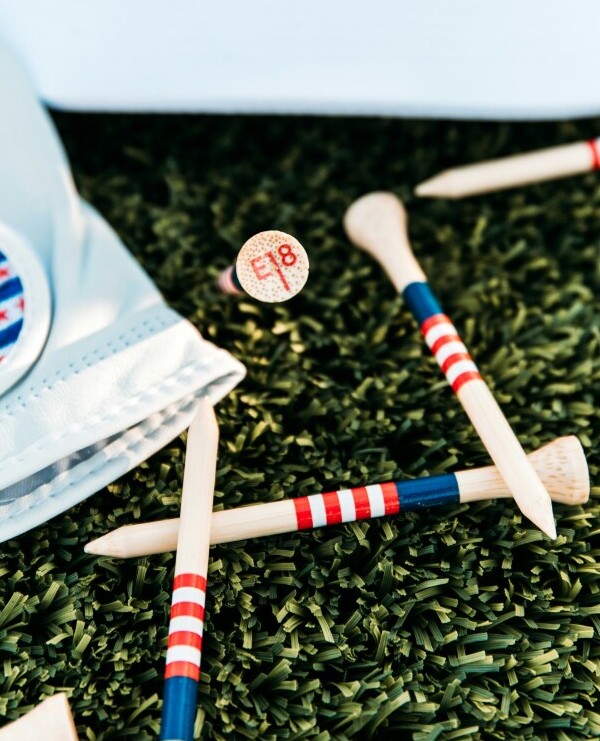Dealing With Fast Greens In Golf

Having trouble with fast greens? It can feel like you’re golfing on glass when you’re not used to it. You’re definitely not alone in this struggle. From weekend warriors to seasoned pros, navigating these slick surfaces can be a real challenge for everyone. Luckily the golf viking has your back, because we’re taking a deep dive into fast greens and how to handle them.
Fast greens are just quicker than what you might typically encounter, meaning the ball rolls further with the same amount of force. This isn’t just tough on the amateur player. Even pros sometimes have their hands full. So, if you’ve ever found yourself nervously approaching your ball, trying to figure out just how much lighter your touch needs to be, you’ve got plenty of company. Every golfer will run into fast greens at some point, so you will need to know how to manage them.
The key here is understanding that mastering fast greens is a shared journey for every golfer. With the right mindset and some practical tips, you can become more comfortable and confident. Whether it’s about adjusting your approach or refining your grip, there are ways to improve your game and deal with this slippery opponent.
Most importantly, remember that improvement takes practice and patience. From watching the pros to soaking up tips from fellow golfers, there’s always another lesson to learn. Embrace the challenge, and you’ll find that fast greens are just another aspect of the beautiful game of golf. So let’s get into what fast greens are.

What are Fast Greens?
Fast greens are golf course surfaces that offer minimal resistance, causing the golf ball to roll much farther with the same stroke compared to slower greens. They create a thrilling yet challenging playing field that tests precision in judgement and control. They can create nightmares for golfers that don’t know how to play them.
The speed of greens is often gauged using a stimpmeter, a device that measures how far a ball rolls down a slight incline. Numbers from these measurements tell golfers just how fast the greens are, with higher readings indicating faster surfaces. Every golf course is different, and some will have faster greens than others.
Several factors contribute to the speed. For instance, the type of grass matters a lot. Bentgrass, commonly used in many courses, is known for creating slick surfaces when cut short. Additionally, weather conditions like sun and wind can dry the grass out, reducing friction and speeding things up. If playing on a wet course, the greens will be slower since the ground is more saturated.
Beyond natural influences, maintaining certain grass conditions is crucial for increasing speed. Regular mowing and rolling of the greens compress the grass, making the surface firm and quick. This makes keeping up with maintenance practices a top priority for courses aiming to challenge players with faster play.
This will all depend on the specific course and how it is maintained. Some course managers aim for fast greens and will have them rolled in order to achieve that effect. Understanding these elements gives you a clearer picture of what makes greens fast and guides you to better handle them in your game.

What Makes Greens Fast? Uncovering the Secrets
Ever wondered why some greens seem super speedy? It’s not a magic trick but rather a mix of natural and manmade factors at play. Understanding these can help you anticipate and adapt your gameplay more effectively.
Start with weather conditions. Sun and wind are key players here. On sunny days, greens can get dry, reducing friction and making them faster. Wind can also dry out the surface quicker, adding extra zip to your ball’s roll.
Course designers play with elements like slopes and contours to naturally speed up greens, creating challenges that test precision and skill. Some course are designed to be more difficult and have faster greens to create a bigger challenge for golfers.
Maintenance practices can’t be overlooked. Frequent mowing keeps grass short, reducing resistance, while techniques like rolling compress the turf, lowering friction even further. Some courses will roll their greens more often in order to maintain a fast speed on the greens.
Some courses schedule regular topdressing, which involves adding a thin layer of material to smooth out imperfections and speed up play. Understanding these practices gives you the edge in adjusting your game plan accordingly.
Anticipating the impact of these factors lets you adapt on the fly, making sure your strategy matches the conditions you’ll face on the course. So what are the major differences that golfers need to keep in mind between fast greens and slow greens?

Fast Greens vs. Slow Greens: The Key Differences
Fast greens and slow greens are two different beasts when it comes to your golf game. Fast greens are all about speed and minimal resistance, while slow greens give you a bit more room for error. Understanding these differences can help you plan your plays more effectively.
Playing on fast greens requires a delicate touch. A small mistake in your stroke can send the ball sliding well past the intended spot since the ball rolls much farther here. You have to dial back your power, focusing on precision and control. It’s a game of finesse where patience truly pays off. Hitting your ball too hard on a fast green can be truly costly.
The psychology of the game shifts notably based on green speed. Fast greens demand more than just physical skill; they require mental agility, too. Anticipating how the ball will behave after it hits the ground can be mentally taxing but rewarding when done right.
On the flip side, slow greens allow a bit more aggressive approach. The ball often stops sooner than anticipated, giving you a bit of leeway in power management. Perfect for those figuring out their skills, slow greens help build confidence before moving to more advanced levels. Golfers don’t need to worry as much about their ball rolling too far.
Ball behavior changes dramatically between the two. Fast greens let the ball glide and roll with ease, while slow ones require more force to cover similar distances. This distinction is crucial when planning each stroke, as it affects how you assess distances and your choice for putting strategy.
Embracing both styles enhances adaptability and sharpens your game sense. Each green type teaches different aspects of gameplay, preparing you for any challenge you might face on the course. You will need to know how to effectively play both if you want to be a well rounded golfer.

Mastering the Fast Greens: Strategies for Success
Handling fast greens like a pro takes strategy and skill. The ability to adapt swiftly is what sets apart great golfers. Knowing how to play a fast green effectively can ultimately save your strokes on your scorecard.
First, consider your stance and grip adjustments. A lighter grip can help maintain control, ensuring precision without over-compensating on speed. As with just about every shot, your grip should be firm enough so that your club doesn’t wobble when making contact, but loose enough so that your motion doesn’t become stiff.
Before you putt, take the time to walk around and examine the green. Look at the slope and surface closely to anticipate how the ball will behave. This awareness is crucial for planning your stroke. Knowing this ahead of time can help you prepare for perfect putt rather than just hoping for the best.
Mental preparation is equally essential. Staying focused can enhance your performance significantly. Trust in your skills and remain calm under pressure. Panic usually leads to rushed and poor decision-making. You always want to maintain a relaxed but focused demeanor when hitting the ball.
Incorporate exercises aimed at improving your putting technique. Drills that simulate game scenarios or put an emphasis on lighter strokes can sharpen your control over time. Test out different situations to help yourself prepare for anything a golf course may throw your way.
Remember to practice regularly under different conditions. The unpredictability of fast greens makes consistent practice a valuable tool to adjust and refine your technique. Take advantage of the practice greens that courses provide before you make your way onto the course. This can help give you an idea of what kind of green you’ll be working with.
Adapting these strategies into your gameplay not only improves your confidence but also elevates your overall golfing experience. Knowing how to handle fast greens can truly help round out your golf game. I’ll see you out on the golf course, putting that ball ever so softly.

